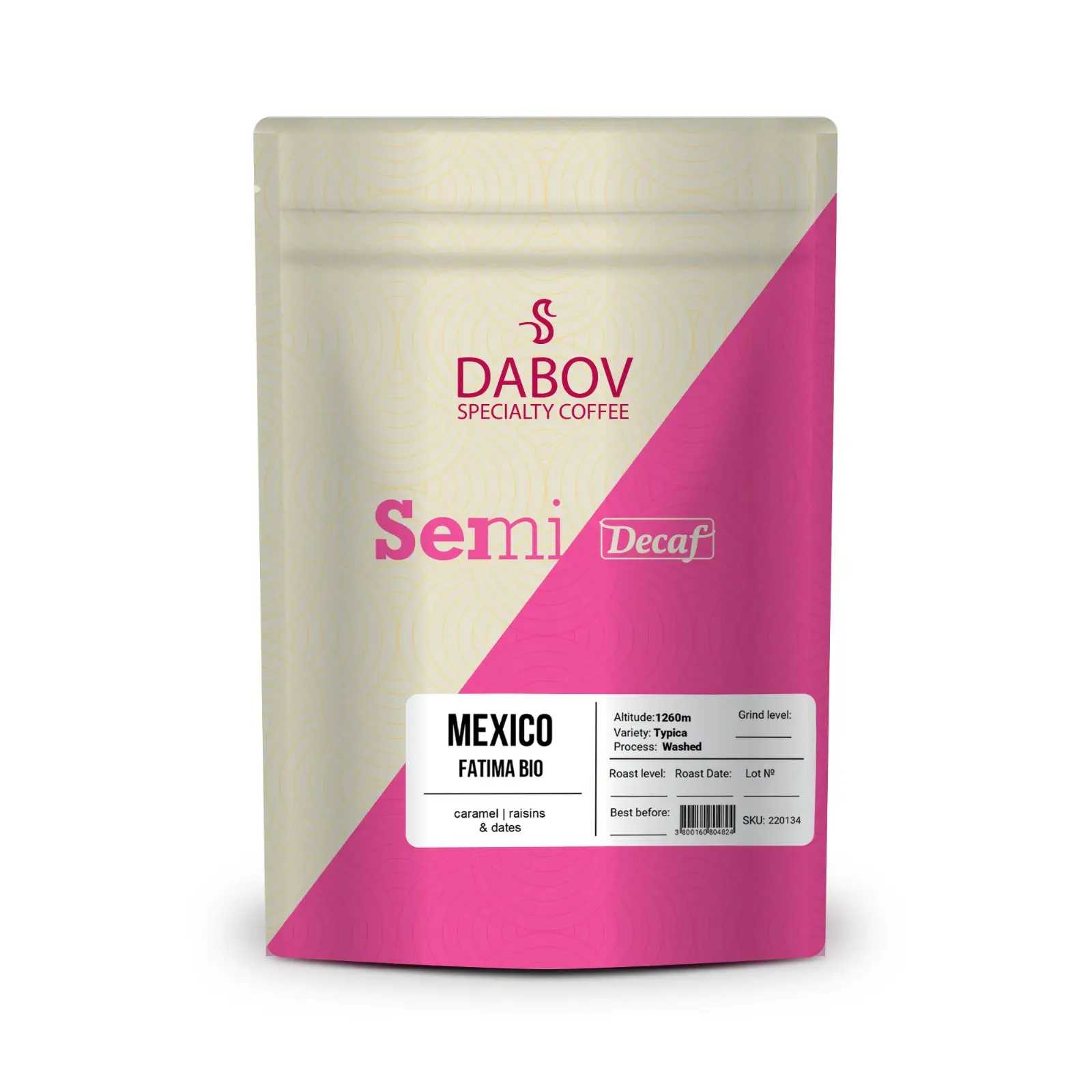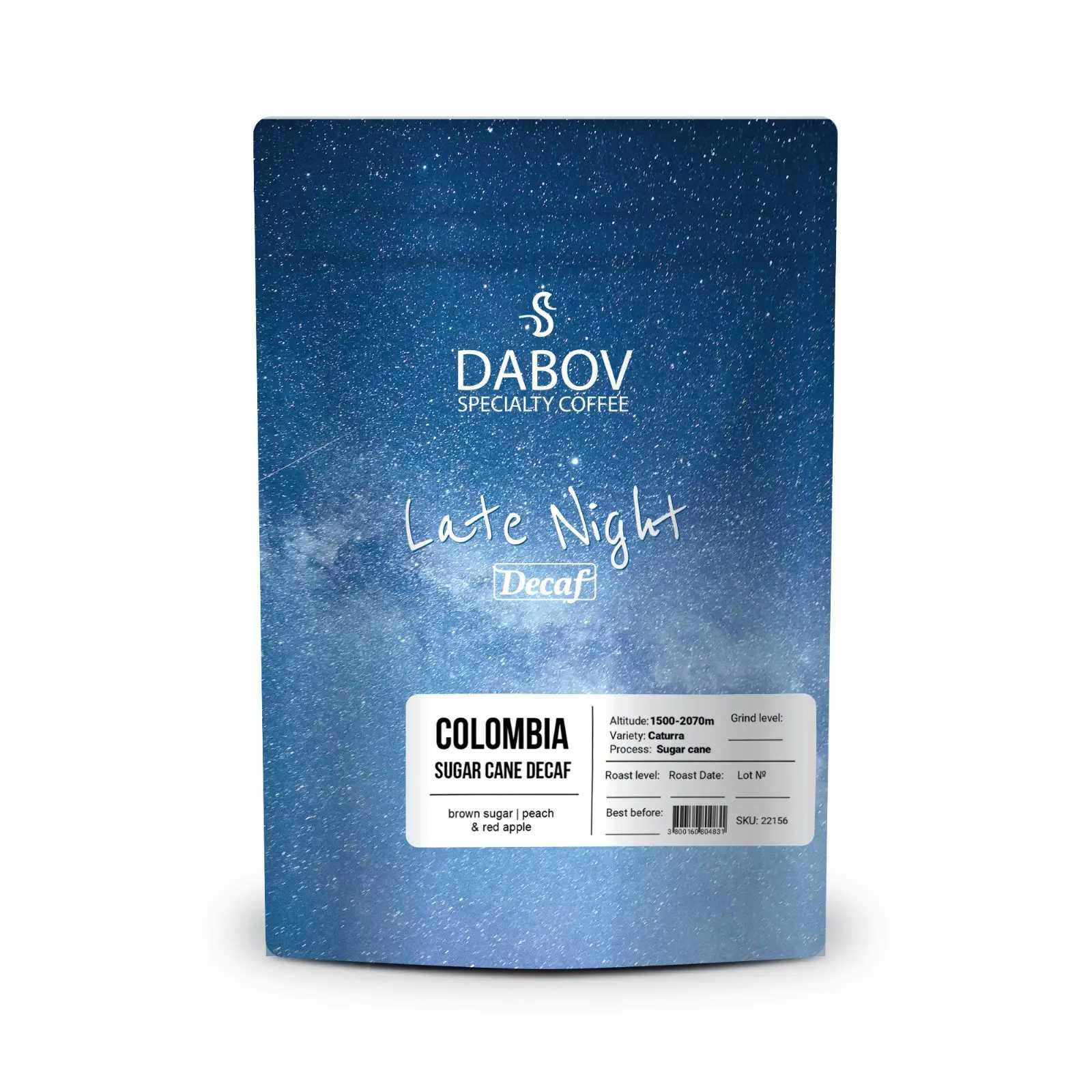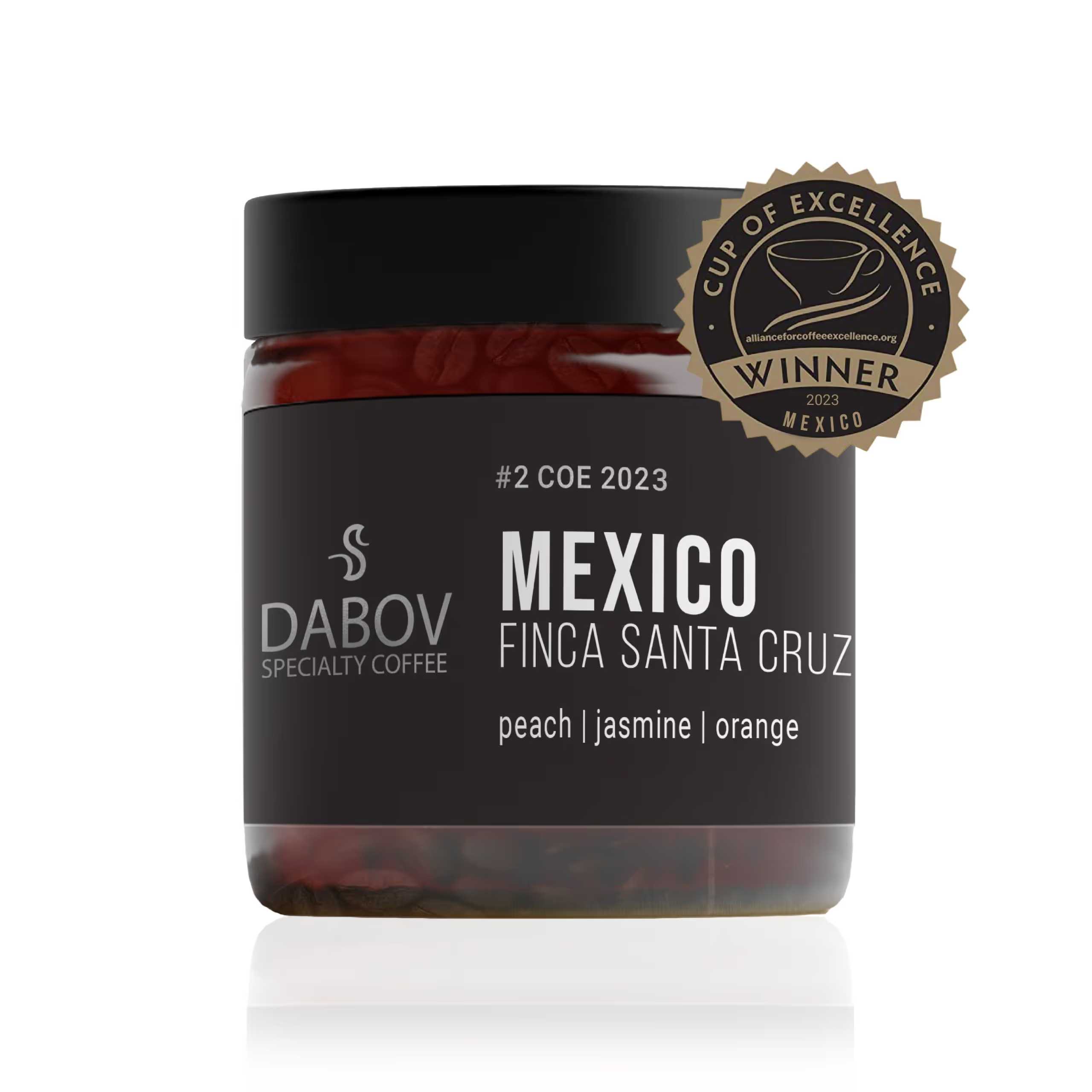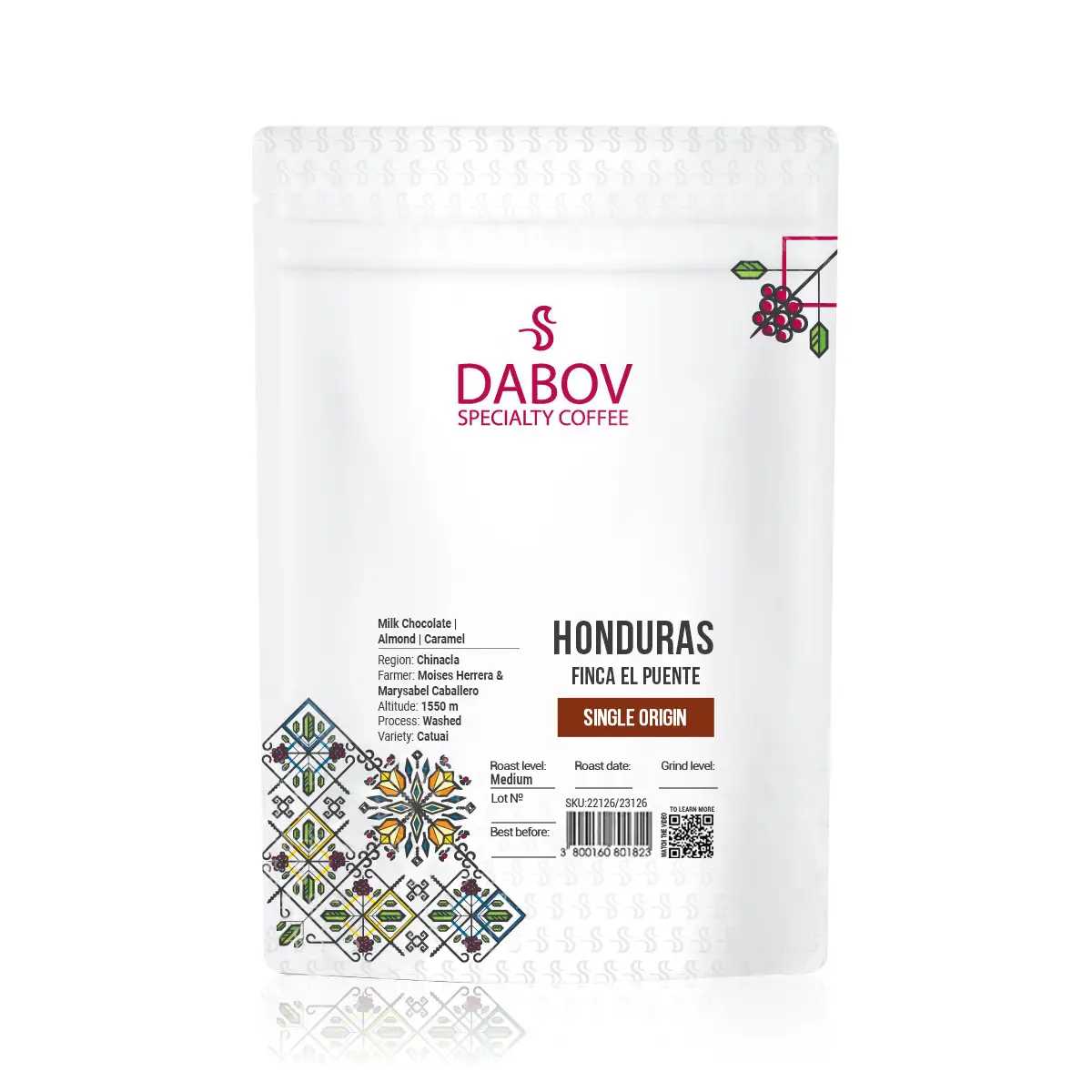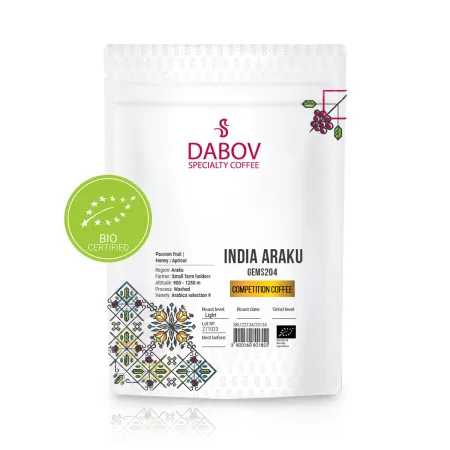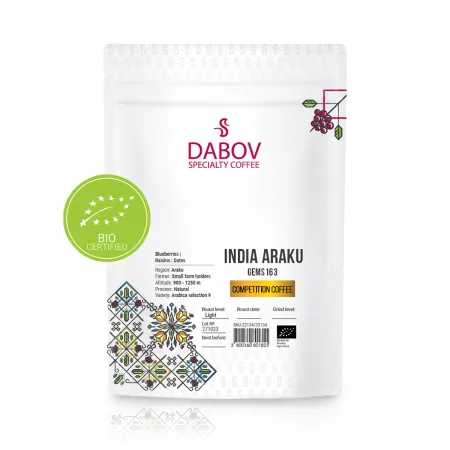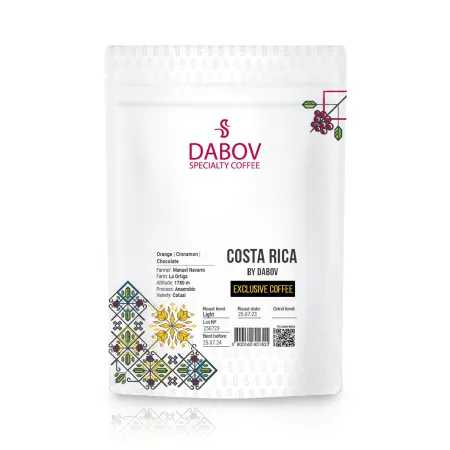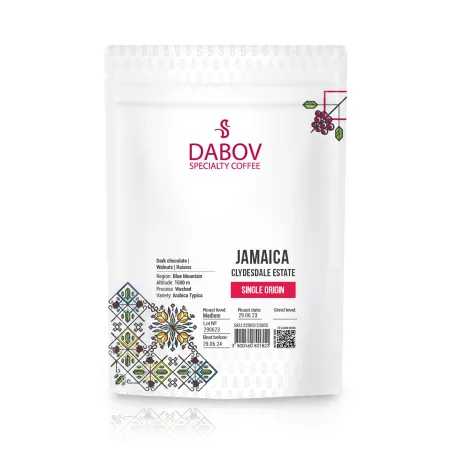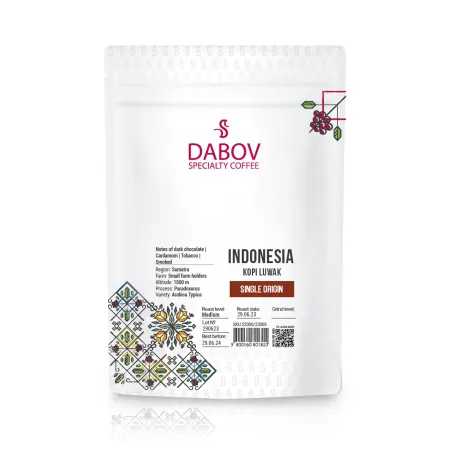Rwanda'92s Coffee Renaissance Regions and Tasting Notes
Rwanda is experiencing a coffee renaissance that is reshaping its identity on the global stage. This article delves into the journey of Rwandan coffee—from its historical roots shaped by colonial influences to its role as a key player in the nation's economic recovery post-genocide. We explore the distinct coffee-growing regions across Rwanda, highlighting their unique flavors and the artisanal practices that define them. Discover the importance of certifications like Fair Trade and organic standards in enhancing the quality of Rwandan coffee. Finally, immerse yourself in the fascinating tasting notes that reveal the bouquet of floral and fruity flavors found in each cup. Join us as we celebrate the revitalization of Rwanda's coffee industry and its promising future.
Introduction
Rwanda, a small landlocked country in East Africa, has emerged as a rising star in the global coffee industry. Known for its lush, rolling hills and ideal climate for coffee cultivation, Rwanda has undergone a remarkable transformation in its coffee sector over the past two decades. This transformation, often referred to as the "Rwandan coffee renaissance," has not only revitalized the country's coffee production but has also played a crucial role in its economic recovery and social development.
The Rwandan coffee renaissance represents more than just an improvement in coffee quality; it symbolizes the resilience and determination of the Rwandan people. Following the devastating genocide of 1994, coffee became a beacon of hope and a catalyst for economic revival. Today, Rwanda's coffee industry stands as a testament to the country's ability to overcome adversity and create a product that is gaining recognition on the world stage for its exceptional quality and unique flavor profiles.
As we delve into the intricacies of Rwanda's coffee landscape, we'll explore the historical context that shaped the industry, the diverse coffee-growing regions that contribute to the country's varied flavor profiles, and the tasting notes that make Rwandan coffee a sought-after commodity among coffee connoisseurs worldwide. This journey through Rwanda's coffee renaissance will not only provide insight into the complexities of coffee production but also shed light on the social and economic impact of this thriving industry on the nation and its people.
I. Background of Rwandan Coffee
A. Historical Context
The story of coffee in Rwanda is deeply intertwined with the country's colonial history and its journey towards independence. Coffee was introduced to Rwanda in the early 1900s by German colonists, who recognized the country's potential for coffee cultivation due to its ideal altitude, volcanic soils, and favorable climate. However, it was during the Belgian colonial period that coffee production became a significant economic activity in Rwanda.
The Belgian colonial administration mandated coffee cultivation as a cash crop, forcing Rwandan farmers to grow coffee on their small plots of land. This top-down approach to coffee production had long-lasting effects on the industry, as it initially focused on quantity over quality. Farmers were required to grow specific varieties of coffee, primarily Bourbon, which remains one of the dominant varietals in Rwanda today.
Post-independence, coffee continued to play a crucial role in Rwanda's economy, but the focus remained on mass production rather than quality. This approach, combined with global coffee price fluctuations and internal political instability, led to challenges for the industry. The coffee sector in Rwanda faced further setbacks during the 1994 genocide, which devastated the country's infrastructure and social fabric.
B. Economic Impact Post-Genocide
In the aftermath of the 1994 genocide, Rwanda's coffee industry, like many other sectors of the economy, was in ruins. However, it was in this period of rebuilding that the seeds of the Rwandan coffee renaissance were sown. The government, along with international partners and NGOs, recognized the potential of coffee as a means to drive economic recovery and improve the livelihoods of rural communities.
Coffee became a catalyst for recovery in several ways. First, it provided a source of income for smallholder farmers, who make up the majority of Rwanda's coffee producers. The government implemented policies to support these farmers, including the establishment of coffee cooperatives, which helped to improve processing methods and access to markets.
Secondly, the focus shifted from quantity to quality. Rwanda began to position itself as a producer of specialty coffee, targeting the growing global market for high-quality, single-origin beans. This shift was supported by investments in infrastructure, training programs for farmers, and the development of washing stations to improve coffee processing.
The economic impact of this renaissance has been significant. Coffee exports have become one of Rwanda's primary sources of foreign exchange, with the value of coffee exports increasing substantially over the past two decades. Moreover, the industry has created employment opportunities beyond farming, including roles in processing, quality control, and marketing.
Perhaps most importantly, the coffee renaissance has contributed to poverty reduction in rural areas. By producing higher-quality coffee that commands premium prices in the international market, farmers have been able to increase their incomes and improve their standard of living. This economic empowerment has had ripple effects throughout communities, contributing to improved education, healthcare, and overall development.
The Rwandan coffee renaissance serves as a powerful example of how a focus on quality and sustainability can transform an industry and contribute to national development. As we explore the coffee regions of Rwanda and the unique flavors they produce, it's important to keep in mind the broader context of this renaissance and its significance for the country and its people.
II. Coffee Regions of Rwanda
A. Key Coffee Growing Regions
Rwanda's coffee landscape is as diverse as it is beautiful, with coffee grown in various regions across the country. Each area contributes its unique characteristics to the coffee produced, influenced by factors such as altitude, soil composition, and microclimate. To truly appreciate Rwandan coffee, it's essential to understand the distinct regions where it's cultivated.
Rwanda is divided into five provinces: Northern, Southern, Eastern, Western, and Kigali (the capital city). While coffee is grown in most of these provinces, we'll focus on the four main regions known for their significant coffee production: Northern, Eastern, Western, and Southern Provinces.
1. Northern Province
The Northern Province of Rwanda is renowned for producing some of the country's finest coffees. This region is characterized by high altitudes, ranging from 1,700 to 2,500 meters above sea level, which contribute to the slow maturation of coffee cherries, resulting in more complex flavor profiles.
The volcanic soils of the Northern Province, particularly in areas near the Virunga Mountains, are rich in minerals and organic matter. This soil composition, combined with regular rainfall and moderate temperatures, creates ideal conditions for coffee cultivation. The region is known for producing coffees with bright acidity, full body, and complex flavor notes.
One of the notable districts in this region is Gakenke, where several award-winning coffees have originated. The coffees from this area often exhibit flavors of citrus, berry, and floral notes, with a wine-like acidity that is highly prized by specialty coffee roasters.
2. Eastern Province
The Eastern Province of Rwanda, while less famous for its coffee production compared to the Northern and Western regions, is home to some hidden gems in the coffee world. This region is characterized by lower altitudes compared to the Northern Province, ranging from 1,300 to 1,800 meters above sea level.
The climate in the Eastern Province is generally warmer and drier than other coffee-growing regions in Rwanda. These conditions contribute to the development of unique flavor profiles that set Eastern Province coffees apart. The region is known for producing coffees with a medium body, moderate acidity, and distinctive nutty and chocolate notes.
One of the notable areas in this region is the Ngoma district, where coffee farmers have been working to improve their cultivation and processing techniques. The coffees from this area often surprise tasters with their complexity, offering flavors that range from caramel and nuts to subtle fruity undertones.
3. Western Province
The Western Province of Rwanda is another significant coffee-producing region, known for its diverse microclimates and varying altitudes. This diversity results in a wide range of flavor profiles within the region. The province borders Lake Kivu, which influences the climate and contributes to the unique characteristics of the coffee grown here.
Altitudes in the Western Province range from 1,400 to 2,000 meters above sea level. The region receives ample rainfall, and the soil is rich in organic matter, providing excellent conditions for coffee cultivation. Western Province coffees are often described as well-balanced, with a good combination of acidity and body.
The Rutsiro and Nyamasheke districts in this province are particularly notable for their coffee production. Coffees from these areas often exhibit bright citrus notes, accompanied by sweet caramel or honey flavors. The proximity to Lake Kivu is believed to contribute to the development of these complex flavor profiles.
4. Southern Province
The Southern Province of Rwanda has gained recognition in recent years for its high-quality coffee production. This region is characterized by hilly terrain and altitudes ranging from 1,500 to 2,000 meters above sea level. The climate is generally cooler than in the Eastern Province, with regular rainfall that supports coffee cultivation.
One of the distinguishing features of the Southern Province's coffee industry is the strong presence of cooperatives. These organizations have played a crucial role in improving coffee quality and providing better market access for smallholder farmers. The Huye district, in particular, has become known for producing exceptional coffees with complex flavor profiles.
Coffees from the Southern Province often exhibit a good balance of acidity and sweetness, with flavor notes that can include citrus, berry, and floral tones. Some coffees from this region have also been noted for their tea-like qualities and delicate aromas.
Understanding these diverse coffee-growing regions of Rwanda provides insight into the complexity and variety of flavors that Rwandan coffee offers. As we delve deeper into the tasting notes and characteristics of coffees from each region, we'll gain a greater appreciation for the unique terroir that Rwanda brings to the world of specialty coffee.
III. Rwandan Coffee Guide
A. Understanding Coffee Varietals
Rwanda's coffee industry is predominantly based on Arabica coffee, known for its superior quality and complex flavor profiles compared to Robusta. Within the Arabica species, several varietals are cultivated in Rwanda, each contributing to the diverse flavor landscape of Rwandan coffee.
The most prevalent coffee varietal in Rwanda is Bourbon, introduced during the colonial period. Bourbon is renowned for its sweet flavor profile and excellent cup quality. It thrives in Rwanda's high-altitude environments, producing cherries with a high sugar content that translates into complex and nuanced flavors in the cup.
Other varietals found in Rwanda include:
- Typica: One of the oldest known varieties of Arabica, Typica is less common in Rwanda but is still cultivated in some regions. It's known for its clean cup profile and subtle sweetness.
- Caturra: A natural mutation of Bourbon, Caturra is a dwarf variety that's gaining popularity due to its higher yield potential. It often produces coffees with bright acidity and good body.
- Jackson: This varietal is a natural mutation of Bourbon discovered in Rwanda. It's known for its resistance to drought and produces coffees with a good balance of acidity and body.
- Catuai: A cross between Mundo Novo and Caturra, Catuai is relatively new to Rwanda but is being adopted for its high yield potential and good cup quality.
The dominance of Bourbon and its derivatives in Rwanda contributes significantly to the country's reputation for producing high-quality, flavorful coffees. These varietals, combined with Rwanda's unique growing conditions, result in coffees that are often described as complex, bright, and clean with a smooth, buttery body.
B. Processing Methods
The way coffee is processed after harvesting plays a crucial role in determining its final flavor profile. In Rwanda, two main processing methods are employed: washed (or fully washed) and natural. Each method imparts distinct characteristics to the coffee.
Washed Processing:This is the most common method used in Rwanda and has been a key factor in the country's coffee renaissance. In washed processing, coffee cherries are depulped shortly after harvesting, removing the outer skin and most of the fruit flesh. The beans, still covered in a layer of mucilage, are then fermented in water tanks for 12-36 hours. After fermentation, the beans are thoroughly washed to remove any remaining mucilage before being dried.
Washed processing tends to produce coffees with:
- Cleaner, brighter flavors
- Higher acidity
- More uniform cup profiles
- Enhanced clarity of origin characteristics
Natural Processing:While less common in Rwanda, natural processing is gaining popularity, especially for producing unique flavor profiles. In this method, whole coffee cherries are dried with the fruit intact, typically on raised beds or patios. The dried cherries are then hulled to remove the dried fruit and parchment layers.
Natural processed coffees often exhibit:
- Fuller body
- Lower acidity
- More intense fruity flavors
- Greater sweetness
The choice of processing method can significantly impact the final flavor of the coffee. For example, a washed Bourbon from the Northern Province might present bright citrus notes and floral aromas, while the same coffee processed naturally could exhibit more intense berry flavors and a syrupy body.
C. Certification and Sourcing
As Rwanda positions itself in the specialty coffee market, certifications have become increasingly important. These certifications not only assure consumers of certain quality and ethical standards but also often translate to better prices for farmers.
Common certifications in the Rwandan coffee sector include:
- Fair Trade: This certification ensures that farmers receive a fair price for their coffee and that certain social and environmental standards are met.
- Organic: Organic certification guarantees that the coffee is grown without the use of synthetic pesticides or fertilizers.
- Rainforest Alliance: This certification focuses on environmental conservation and sustainable livelihoods for farmers.
- UTZ Certified: This program promotes sustainable farming practices and better opportunities for farmers and their families.
Many Rwandan coffee cooperatives have obtained multiple certifications, allowing them to access different markets and command premium prices for their coffee.
In terms of sourcing, the Rwandan coffee sector has made significant strides in traceability. Many specialty coffees from Rwanda can be traced back to specific washing stations or even individual farmers. This level of traceability is highly valued in the specialty coffee market, as it allows roasters and consumers to connect more directly with the origin of their coffee.
The government body responsible for developing and promoting the Rwandan coffee sector is the National Agricultural Export Development Board (NAEB). NAEB works to improve quality standards, promote Rwandan coffee internationally, and support farmers and cooperatives in accessing global markets.
Understanding these aspects of Rwandan coffee production – from varietals to processing methods and certifications – provides a foundation for appreciating the complexity and quality of coffees from this origin. As we move into exploring the specific tasting notes associated with different regions, this knowledge will help in understanding why Rwandan coffees exhibit such diverse and exciting flavor profiles.
IV. Coffee Tasting Notes
A. Flavor Profiles of Rwandan Coffee
Rwandan coffee is celebrated for its complex and diverse flavor profiles, which are a result of the country's unique growing conditions, prevalent varietals, and meticulous processing methods. While each region and even individual farms can produce coffees with distinct characteristics, there are some general flavor notes that are often associated with Rwandan coffee.
Overall, Rwandan coffees are known for their:
- Bright Acidity: Often described as citrusy or wine-like, this crisp acidity is a hallmark of high-grown Rwandan coffees.
- Medium to Full Body: Rwandan coffees typically have a smooth, buttery mouthfeel that balances well with their acidity.
- Complex Sweetness: Notes of caramel, honey, or brown sugar are common, providing a pleasing sweetness that complements the coffee's other flavors.
- Floral Aromatics: Many Rwandan coffees exhibit delicate floral notes, particularly those from higher altitudes.
- Fruit Notes: Depending on the region and processing method, flavors of berries, stone fruits, or citrus are often present.
- Spice and Nut Undertones: Subtle notes of cinnamon, nutmeg, or various nuts can add depth to the flavor profile.
These general characteristics provide a framework for understanding Rwandan coffee, but the specific flavor notes can vary significantly based on the region of origin.
B. Tasting Notes by Region
1. Northern Province Tasting Notes
Coffees from the Northern Province are often considered the cream of the crop in Rwanda. The high altitudes and volcanic soils contribute to coffees with vibrant acidity and complex flavor profiles.
Typical flavor notes include:
- Bright citrus (lemon, orange, tangerine)
- Red berries (raspberry, strawberry)
- Floral notes (jasmine, orange blossom)
- Black tea
- Honey sweetness
Example: A washed Bourbon from the Gakenke district might present with a aroma of jasmine, a bright lemon acidity, flavors of red berries and orange, with a honey-like sweetness and a black tea finish.
2. Eastern Province Tasting Notes
The Eastern Province, with its lower altitudes and warmer climate, produces coffees that are often less acidic but with a fuller body compared to those from the Northern Province.
Common flavor notes include:
- Nuts (almond, hazelnut)
- Chocolate (milk chocolate, cocoa)
- Caramel
- Stone fruits (peach, apricot)
- Subtle spices
Example: A coffee from the Ngoma district might exhibit aromas of roasted nuts, flavors of milk chocolate and caramel, with a subtle apricot sweetness and a hint of cinnamon in the finish.
3. Western Province Tasting Notes
The Western Province, influenced by Lake Kivu, produces coffees with a good balance of acidity and body. The diverse microclimates in this region result in a wide range of flavor profiles.
Typical flavor notes include:
- Citrus fruits (orange, grapefruit)
- Tropical fruits (pineapple, mango)
- Caramel or brown sugar sweetness
- Black tea
- Subtle florals
Example: A washed coffee from the Rutsiro district near Lake Kivu might present with aromas of orange blossom, flavors of grapefruit and pineapple, a caramel-like sweetness, and a black tea finish.
4. Southern Province Tasting Notes
The Southern Province has gained recognition for producing complex and balanced coffees. The strong presence of cooperatives in this region has contributed to consistent quality and interesting flavor profiles.
Common flavor notes include:
- Red fruits (cherry, cranberry)
- Citrus (lime, mandarin)
- Floral notes (rose, lavender)
- Brown sugar or molasses sweetness
- Subtle spices
Example: A coffee from the Huye district might exhibit aromas of rose and mandarin, flavors of cherry and cranberry, with a brown sugar sweetness and a hint of cinnamon in the aftertaste.
It's important to note that these tasting notes are generalizations, and individual coffees can vary based on factors such as specific farm location, processing method, and even the particular harvest season. The beauty of Rwandan coffee lies in its ability to surprise and delight with its diversity of flavors, making each cup a unique experience.
As consumers become more familiar with the nuances of Rwandan coffee, they often develop preferences for coffees from specific regions or even particular washing stations. This growing appreciation for the terroir of Rwandan coffee has been a driving force in the country's coffee renaissance, encouraging producers to focus on quality and uniqueness in their offerings.
V. The Role of Sustainability in Rwanda's Coffee Renaissance
A. Environmental Considerations
Sustainability has become a cornerstone of Rwanda's coffee renaissance, with a growing emphasis on environmentally friendly farming practices. This focus on sustainability is not just about preserving the environment; it's also closely tied to maintaining and improving coffee quality.
One of the key environmental considerations in Rwandan coffee production is soil conservation. The country's hilly terrain makes it susceptible to soil erosion, which can be detrimental to coffee plants and overall land productivity. To combat this, many farmers have adopted terracing techniques, particularly in the steeper areas of the Northern and Western provinces. These terraces help to prevent soil erosion, conserve water, and create more stable growing conditions for coffee plants.
Another important aspect of sustainable coffee farming in Rwanda is shade growing. While not all Rwandan coffee is shade-grown, there's an increasing trend towards this practice, especially in regions bordering national parks or forest reserves. Shade-grown coffee not only helps to preserve biodiversity by providing habitat for birds and other wildlife but also contributes to the complex flavor development in coffee beans. The shade slows down the maturation process of coffee cherries, allowing for more complex sugars to develop.
Water management is another critical environmental consideration. Coffee processing, particularly in the washing method prevalent in Rwanda, requires significant amounts of water. Many washing stations have implemented water recycling systems and improved wastewater management to reduce their environmental impact. Some cooperatives have gone a step further by using the nutrient-rich wastewater from coffee processing as a natural fertilizer for other crops, creating a circular system that benefits both the environment and local food security.
Climate change poses a significant threat to coffee production worldwide, and Rwanda is no exception. In response, there are ongoing efforts to develop more resilient coffee varietals and to educate farmers on climate-smart agricultural practices. These include techniques such as mulching to retain soil moisture, planting shade trees to regulate temperature, and diversifying crops to spread risk.
B. Social Impact
The social impact of Rwanda's coffee renaissance has been profound, touching various aspects of community life and contributing significantly to the country's post-genocide recovery and development.
At the heart of this social impact are the coffee cooperatives. These organizations have played a crucial role in empowering smallholder farmers, who make up the majority of Rwanda's coffee producers. Cooperatives provide members with access to resources, training, and markets that would be difficult for individual farmers to obtain on their own.
Many cooperatives have implemented programs that go beyond coffee production to address broader community needs. For example, some cooperatives have established health clinics, built schools, or provided microloans to members for non-coffee related businesses. This holistic approach to community development has helped to improve overall living standards in coffee-growing regions.
Gender equality has been another important aspect of the social impact of Rwanda's coffee industry. Women have traditionally played a significant role in coffee production, but often without recognition or decision-making power. Many cooperatives and industry initiatives now focus on empowering women in the coffee sector. This includes providing leadership training, ensuring women's representation in cooperative management, and even developing women-only produced coffee lines.
The coffee industry has also contributed to reconciliation efforts in post-genocide Rwanda. Coffee cooperatives often bring together members from different backgrounds, fostering cooperation and rebuilding trust within communities. The shared goal of producing high-quality coffee has provided a unifying force, transcending historical divisions.
Education and skill development have been key components of the social impact. Training programs, often supported by international partners or NGOs, have helped farmers improve their agricultural practices, learn about quality control, and understand the global coffee market. This knowledge empowerment has not only led to better coffee quality but has also given farmers more agency in their interactions with buyers and exporters.
The economic benefits of the coffee renaissance have had ripple effects throughout communities. Higher incomes from premium coffee sales have allowed families to invest in education, healthcare, and other businesses. This economic uplift has contributed to reduced rural-to-urban migration, as young people see viable economic opportunities in their home communities.
Lastly, the international recognition of Rwandan coffee has instilled a sense of pride and identity among producers. Farmers who once saw coffee as merely a cash crop now take pride in producing a globally recognized product. This shift in perception has motivated many to invest more time and effort into coffee production, further driving quality improvements.
The sustainability efforts in Rwanda's coffee sector, both environmental and social, have been integral to the success of the country's coffee renaissance. They have not only contributed to the production of high-quality coffee but have also ensured that the benefits of this renaissance are shared broadly across coffee-growing communities. As Rwanda continues to establish itself as a producer of premium coffees, these sustainability initiatives will likely play an even more crucial role in shaping the future of the industry.
VI. Conclusion
Rwanda's coffee renaissance is a remarkable story of transformation, resilience, and quality. From the challenging aftermath of the 1994 genocide to becoming a producer of some of the world's most sought-after specialty coffees, Rwanda's journey in the coffee world is nothing short of inspirational.
This renaissance has been characterized by a shift from quantity to quality, with a focus on producing exceptional coffees that command premium prices in the international market. The unique growing conditions across Rwanda's diverse regions, combined with the prevalence of high-quality Bourbon varietals and meticulous processing methods, have resulted in coffees with distinct and complex flavor profiles that captivate the palates of coffee enthusiasts worldwide.
The impact of this transformation extends far beyond the cup. It has been a driving force in Rwanda's economic recovery, providing livelihoods for thousands of smallholder farmers and their families. The coffee industry has fostered community development, promoted gender equality, and even contributed to reconciliation efforts in the post-genocide era.
Moreover, the focus on sustainability – both environmental and social – ensures that Rwanda's coffee renaissance is not just a short-term phenomenon but a foundation for long-term growth and development. The adoption of environmentally friendly farming practices and the empowerment of local communities through cooperatives and training programs are setting the stage for a sustainable and prosperous future for Rwanda's coffee sector.
As we've explored the various regions, tasting notes, and unique characteristics of Rwandan coffee, it becomes clear that each cup tells a story – a story of the land, the people, and the careful craftsmanship that goes into its production. Whether it's the bright, citrusy notes of a Northern Province coffee or the rich, chocolatey flavors from the Eastern Province, Rwandan coffees offer a diverse and exciting range of taste experiences.
For coffee lovers and industry professionals alike, Rwandan coffee represents an opportunity to explore a world of flavors while supporting a industry that is making a real difference in people's lives. As awareness of Rwanda's coffee quality continues to grow, so too does the potential for further development and innovation in the sector.
The Rwandan coffee renaissance is more than just a revival of an industry; it's a testament to the power of quality, sustainability, and human determination. It stands as an inspiring example of how a focus on excellence can transform not just an industry, but an entire nation.
Call to Action
As we conclude our journey through Rwanda's coffee landscape, we invite you to experience the richness and diversity of Rwandan coffee for yourself. Whether you're a seasoned coffee connoisseur or a curious newcomer, there's always something new to discover in the world of Rwandan coffee.
Here are some ways you can engage further with Rwandan coffee:
- Seek out Rwandan coffees at your local specialty coffee shops or roasters. Don't hesitate to ask about the specific region or cooperative the coffee comes from.
- Experiment with different brewing methods to experience the full range of flavors Rwandan coffees have to offer. Try a bright, citrusy Northern Province coffee as a pour-over, or enjoy the full-bodied richness of an Eastern Province coffee in a French press.
- Share your experiences with Rwandan coffee on social media platforms. Use hashtags like #RwandanCoffee or #CoffeeRenaissance to connect with other enthusiasts and learn from their experiences.
- Consider supporting organizations that work directly with Rwandan coffee farmers and cooperatives. Many roasters have direct trade relationships that provide additional benefits to producers.
- If you're in the coffee industry, explore opportunities to source Rwandan coffee or even visit the country to see the coffee production firsthand.
- Educate others about the unique qualities of Rwandan coffee and the positive impact the industry has had on the country's development.
By engaging with Rwandan coffee, you're not just treating yourself to a exceptional cup, but you're also supporting a industry that is making a real difference in people's lives. So, the next time you're looking for a new coffee experience, remember the hills of Rwanda and the remarkable renaissance that has taken place there. Your next favorite cup might just be waiting for you to discover it.



